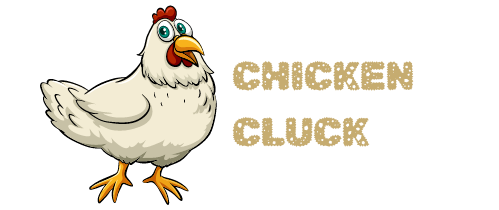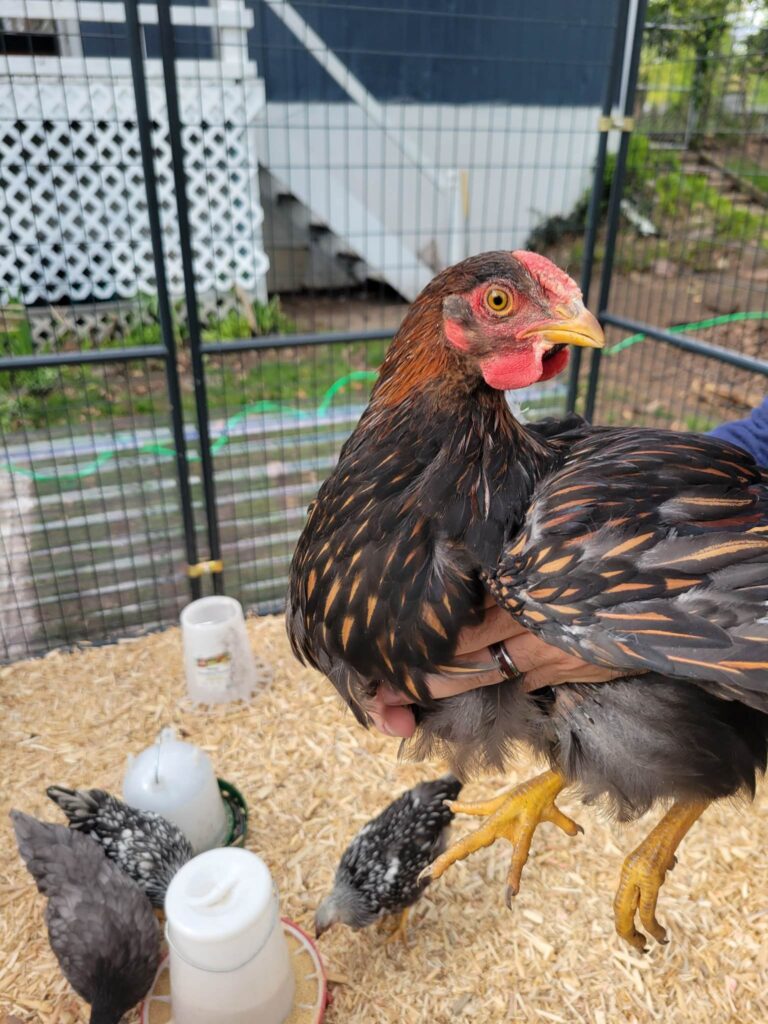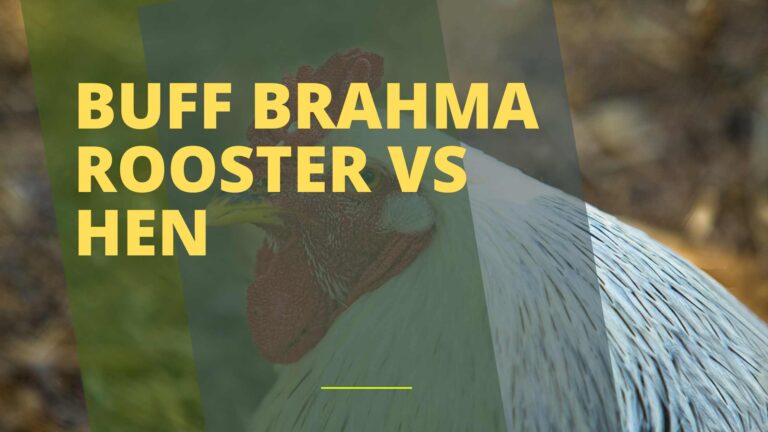A Lavender Orpington pullet is a young female chicken, while a cockerel is a young male. Identifying them involves observing physical and behavioral differences.
Raising chickens has become increasingly popular among backyard farmers and poultry enthusiasts. The Lavender Orpington breed, known for its striking plumage and friendly disposition, is often a top choice. One challenge that arises for many owners is determining the sex of their Lavender Orpington chickens.
This distinction is crucial, as pullets (young hens) will eventually lay eggs, and cockerels (young roosters) may develop louder crowing and more aggressive behaviors. Early identification allows for better planning, whether for egg production, breeding, or maintaining a peaceful coop. Lavender Orpingtons are recognized not only for their beautiful coloring but also for their dual-purpose qualities, providing both eggs and meat. Understanding the differences between pullets and cockerels can help in managing flock dynamics and ensuring a well-balanced, productive backyard farm.
Lavender Orpington Poultry: An Introduction
The Lavender Orpington is a dream for poultry enthusiasts. Admired for its beauty and loved for its calm demeanor, this chicken catches every eye. Let’s dive into the world of these charming birds.
Origins And Appearance
The Lavender Orpington is a British breed, first developed in the 20th century. Its unique lavender color is the result of diluting the black gene. This color is also known as “self-blue” in the poultry world.
These chickens boast fluffy feathers and a heavyset body. Their strikingly soft, lavender plumage sets them apart from other chickens. Here are some key visual features:
- Large, fluffy feathering
- Curvy body with a broad back
- Five toes on each foot
- Comb, wattles, and earlobes of moderate size
Characteristics Of The Breed
Lavender Orpingtons are known for their temperament. They are friendly, easy to handle, and great for families. These birds are also good layers, offering a steady supply of eggs.
Here are some highlights of their characteristics:
| Characteristic | Description |
|---|---|
| Temperament | Calm and friendly |
| Egg Production | Approximately 150-200 eggs per year |
| Size | Heavyset, with hens weighing about 7 pounds |
Whether you are after a gentle pet or a productive layer, the Lavender Orpington can be an excellent choice for any flock.
Credit: www.backyardchickens.com
Identifying Lavender Orpingtons: Pullet Or Cockerel?
Raising Lavender Orpington chickens brings a touch of elegance to your backyard. These birds, with their striking plumage, are a sight to behold. Yet, for many poultry enthusiasts, telling apart a young pullet from a cockerel proves challenging. Identification is crucial for flock planning and breeding purposes. This guide will simplify how to distinguish between a Lavender Orpington pullet (young hen) and a cockerel (young rooster) based on physical traits and behaviors.
Physical Differences
Physical markers are key in telling pullets and cockerels apart. Pullets typically start with smaller combs and wattles that are light pink. Cockerels boast larger, redder combs and wattles even at a young age.
| Feature | Pullet | Cockerel |
|---|---|---|
| Comb & Wattle Size | Small and Pale | Large and Red |
| Feather Development | Even and Early | Irregular and Later |
| Tail Structure | Rounded Feathers | Pointed and Longer Feathers |
By six weeks, a cockerel’s hackle, saddle, and sickle feathers tend to be longer and pointier than those of a pullet. Their legs also appear thicker and may show spur development.
Behavioral Clues
Behavior can be a telltale sign when identifying gender. Cockerels often exhibit dominant and bold behavior from an early age. They may attempt to crow and assert themselves within the group.
- Pullets are generally more reserved.
- They stick closer together and act more cooperatively.
- Cockerels might engage in mock fights, puffing up their feathers and facing off against each other.
Take note of the bird’s behavior when it’s feeding. Pullets are less aggressive, while cockerels may push to eat first. With time, patience, and observation, distinguishing Lavender Orpington pullets from cockerels becomes straightforward.
Early Signs: Spotting The Differences
Raising Lavender Orpingtons brings the joy of discovering whether your fluffy friend is a pullet or a cockerel. Spotting the subtle differences early on can help manage your expectations and plan for your flock. Here, we look at physical traits that reveal their gender.
Comb And Wattle Development
Keep an eye on the comb and wattle as they’re clear indicators of gender. Cockerels develop these features much quicker than pullets. As early as 3-4 weeks, you might notice the cockerel’s comb growing larger and gaining color. Their wattles also appear fuller and redder compared to the small, pale wattles of a pullet. These developments in a cockerel are bold markers of their gender.
Feather Growth Patterns
Feathers tell a tale of their own. In Lavender Orpingtons, pullets and cockerels have distinct feathering timelines. Expect pullets to feather out more quickly, donning a soft, full coat. Cockerels lag behind with feather growth, but they often compensate with flashier, pointed feathers later on. Once the birds hit the 5-6 week marker, these patterns become more evident and can guide you towards identifying the cockerels in your coop.
| Trait | Pullet | Cockerel |
|---|---|---|
| Comb size | Small and pale | Large and colorful |
| Wattle development | Minimal and pale | Fuller and redder |
| Feather growth | Faster, with rounded tips | Slower, with pointed tips |
Remember: these are general guidelines. Some birds develop at unique rates. Observing these early signs can provide valuable clues to your Orpington’s identity!

Credit: www.reddit.com
Secondary Characteristics: Hen Or Rooster
Distinguishing between a Lavender Orpington pullet and a cockerel can be challenging. It’s important to understand the secondary characteristics. These features emerge as chickens mature, making gender identification easier. Let’s explore two key traits that help differentiate hens from roosters.
Size And Stature
When comparing Lavender Orpington pullets to cockerels, size and stature are noticeable indicators. Generally, cockerels grow larger and more robust than pullets.
| Characteristic | Pullet | Cockerel |
|---|---|---|
| Height | Shorter | Taller |
| Body Shape | More rounded | More angular |
| Comb and Wattles | Smaller, dainty | Larger, prominent |
Cockerels have an upright posture and more pronounced combs and wattles compared to pullets.
Sound And Crow
The vocalizations of Orpingtons can be a clear gender giveaway. Cockerels eventually crow, while pullets have a different vocal repertoire.
- Pullets make soft clucking sounds.
- Cockerels develop a loud, distinct crow.
Crow timing varies, but cockerels typically start crowing at about 4-5 months of age. Listening for this key difference is crucial in identification.
Mature Birds: Confirming Gender
Are you curious about the sex of your Lavender Orpington bird? Adult chickens, also known as pullets (females) and cockerels (males), show distinct features that can help. Let’s dive into how to spot these differences with ease.
Egg Laying
The quickest sign to distinguish a mature Lavender Orpington pullet from a cockerel is egg laying. Pullet starts to lay eggs at around 5 to 6 months old.
- No eggs mean your bird is likely a cockerel.
- Pullets produce regularly, barring health or stress issues.
Physical Maturity Signs
Once your Lavender Orpingtons approach maturity at 5-6 months, observe these traits:
| Trait | Pullet | Cockerel |
|---|---|---|
| Comb and Wattle Size | Smaller and lighter colored | Larger and brighter red |
| Feather Coloring | Subtle and even | Vivid with possible iridescent sheen |
| Tail Feathers | Shorter and rounded | Long, pointed and more pronounced |
| Body Size and Shape | Rounder and heavier-set | Taller with a more upright stance |
Following these guidelines will help you determine if your mature Lavender Orpington is a pullet or a cockerel. Remember, physical maturity often brings clear gender traits.
Behavioral Analysis: Flock Dynamics
Welcome to the enchanting world of Lavender Orpingtons, where their calm nature and social behavior captivate poultry enthusiasts. Observing the flock dynamics of this breed reveals fascinating aspects of their interactions. Recognizing the differences between pullets (young females) and cockerels (young males) plays a crucial part in understanding the overall harmony within the flock.
Dominance And Pecking Order
The structure of a chicken flock is quite complex. Lavender Orpingtons are no exception. They live by a system called the “pecking order”. This order decides who eats first, who leads, and who follows. Pullets and cockerels establish their place in the flock early on. Typically, cockerels strive to climb the ranks faster than pullets. This behavior is crucial for the well-being of the flock. Unchecked dominance can lead to stress and injury. Owners should watch for signs such as feather pecking.
- Cockerels show dominance through assertive postures and vocalizations.
- Pullets tend to be subtler, using body language to establish their position.
- A well-balanced flock will have a clear pecking order with minimal aggression.
Mating Behavior
Mating behavior separates cockerels from pullets distinctly. As cockerels mature, you might observe them performing a dance. This dance is known as “tidbitting”. It involves picking up and dropping food while calling the hens. It’s his way of showing he’s a suitable mate. Pullets react to this display in various ways. Some may ignore the cockerel, while others show interest.
Recognizing mating behavior early on is key. This behavior dictates flock dynamics and breeding success. An attentive owner can manage their flock for harmony. This management includes separating aggressive birds, or introducing new members carefully.
| Behavior | Pullet | Cockerel |
|---|---|---|
| Position in Pecking Order | Typically lower | Often higher |
| Tidbitting | Rarely observed | Common during courtship |
| Response to Tidbitting | Varies; interest to indifference | Not applicable |
In conclusion, observing Lavender Orpington pullets and cockerels offers insights into the behavioral patterns that define flock dynamics. Owners can use this understanding to ensure peace and productivity within their prized poultry collection.
Handling And Care: Gender Specifics
When raising Lavender Orpingtons, understanding gender-based needs ensures a happy, thriving flock. Cockerels (young roosters) and pullets (young hens) require different care. Let’s explore these differences in housing and feeding.
Housing Needs
Pullets and cockerels start similarly, needing warmth and safety. Yet, as they grow, their housing needs diverge.
Pullets:
- Need nesting boxes – one per four to five birds.
- Prefer quiet, darkened areas to lay eggs.
- Require less space than cockerels.
Cockerels:
- Need more space to prevent aggression.
- Should be separated if fighting occurs.
- Require sturdy perches to support their weight.
Common Needs:
- Protection from predators and harsh weather.
- Proper ventilation to maintain fresh air.
- Consistent cleaning to promote health.
Feeding Regimen
Diet changes with age and gender. Pullet and cockerel feeds differ to meet their unique growth and health requirements.
| Age | Pullet Feed | Cockerel Feed |
|---|---|---|
| 0-6 weeks | Starter crumble for strong growth. | Starter crumble, rich in protein. |
| 7-20 weeks | Grower feed, less protein. | Continue grower feed, monitor weight. |
| 20+ weeks | Layers feed with calcium. | Lower protein, maintain condition. |
Always ensure fresh water is available. Supplemental treats should only be given in moderation to prevent obesity.
Breeding Lavender Orpingtons: Best Practices
For those devoted to raising Lavender Orpingtons, understanding the nuances of breeding this majestic poultry is crucial. The Lavender Orpington, a variant that exudes an ethereal hue and a friendly demeanor, offers an air of elegance to any backyard flock. This breed requires methodologies that support healthy lineage and preserve their unique coloration. Let’s delve into the world of breeding these birds and outline some of the best practices for success.
Selecting Breeding Stock
To commence your breeding journey, selecting the right Lavender Orpingtons is pivotal. Heritable traits, vigor, and the alluring lavender color must be your guide. Begin with a close inspection of the birds’ health and temperament, ensuring a robust lineage.
- Check physical health: Eyes should be clear, feathers plush, and movement spry.
- Assess temperament: Choose gentle birds that show no aggression.
- Genetic diversity: Select birds from different families to avoid inbreeding.
Review lineage records to ensure both pullets and cockerels come from prolific layers with desirable traits. Your chosen stock should not only embody the breed standard but also contribute to genetic vigor.
Incubation And Hatching
With your ideal breeding stock selected, the next step is effective incubation and hatching. The eggs of Lavender Orpingtons demand a stable environment to develop into healthy chicks.
| Incubation Day | Temperature | Humidity | Turning Frequency |
|---|---|---|---|
| 1-18 | 99.5°F (37.5°C) | 40-50% | Every 3-4 hours |
| 19-21 | 99°F (37.2°C) | 65-75% | Stop turning |
Monitoring is key throughout the incubation period. Use a reliable digital thermometer and hygrometer to maintain optimal conditions. Note any variations and adjust settings accordingly.
After hatching, provide the chicks with a nourishing start. Maintain a warm brooder and offer a balanced starter feed. Give access to clean water at all times. As chicks grow, monitor for vigorous growth and any signs of distress.
Credit: www.tiktok.com
Conclusion
Understanding the differences between Lavender Orpington pullets and cockerels is essential for any breeder or backyard chicken enthusiast. From their distinctive behaviors to their physical characteristics, each bird has its unique traits. Remember, the right choice hinges on your specific needs, whether for egg production, ornamental purposes, or expanding your flock.
Choose wisely to ensure a harmonious and productive coop.




